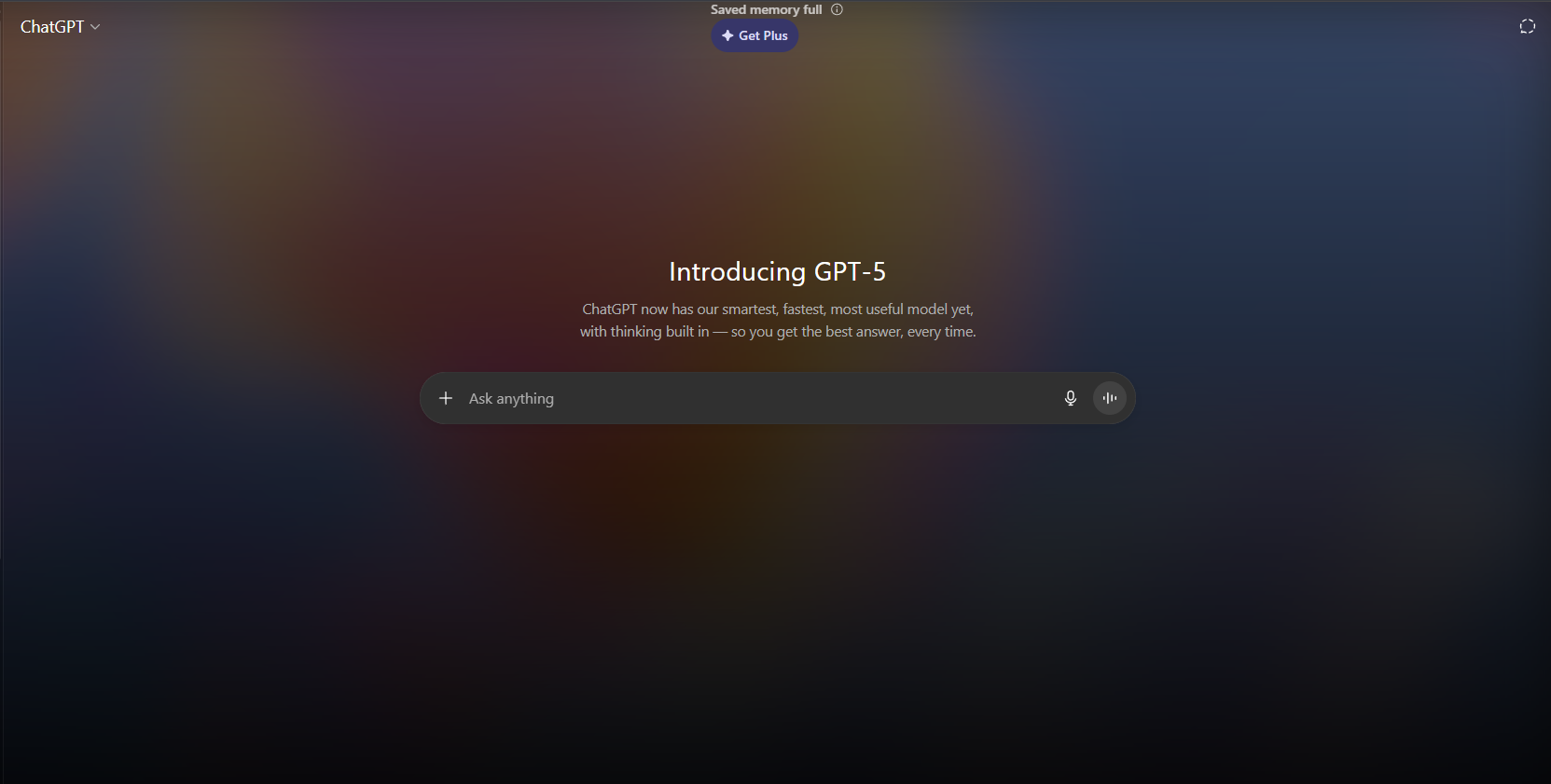1. GPT-4: The Foundation of General-Purpose AI
Introduced by OpenAI, GPT-4 marked a significant leap in AI capability. It demonstrated human-level performance across academic benchmarks and complex professional tasks—scoring within the top 10% on a simulated bar exam, among other feats—achieved through careful scaling, alignment, and optimization techniques.
2. GPT-4o (“omni”): The Multimodal All-Rounder
GPT-4o, dubbed the “Swiss Army knife” of GPTs, handles text, images, audio, and even speech output. With a massive 128,000-token context window, it excels in multitasking—supporting image recognition, handwriting analysis, and more.
It’s the go-to for everyday use: balanced, nuanced, and flexible—though it still trails behind for logic-heavy tasks or deep reasoning compared to the specialized “o-series” models.
3. GPT-4.1 Series: Coding and Large-Context Specialists
Released in April 2025, the GPT-4.1 family brought a staggering 1 million-token context window and significantly improved performance in coding, instruction-following, and complex reasoning. Notable variants include:
- GPT-4.1 (Flagship): Excellent coding and instruction capabilities; priced at ~$2 input / $8 output per million tokens.
- GPT-4.1 Mini & Nano: Lightweight, cost-efficient versions (as low as $0.10 input / $0.40 output per million tokens), ideal for fast, large-scale deployments without sacrificing much capability.
4. The o-Series: Deep Reasoning Specialists
The “o-series” models—o1, o1-preview, o3-mini, and o3-mini-high—are fine-tuned for logic, step-by-step problem solving, and deep reasoning:
- o1-preview achieved near-perfect scores on a Dutch high-school math exam, outperforming GPT-4o significantly (76 vs 66 out of 76).
- o3-mini / o3-mini-high offer fast reasoning and great coding assistance, making them practical for interactive and logic-heavy tasks.
5. GPT-4.5: A Polished, Research-Preview Increment
Launched unexpectedly in early 2025, GPT-4.5 focused on refining conversational fluency, reducing hallucinations, and enhancing multilingual understanding:
- Benchmark scores soared: GPQA (science) accuracy jumped from 53.6% (GPT-4o) to 71.4%; multimodal capability improved to 74.4%,
- Hallucinations dropped sharply—from over 60% in GPT-4 to about 37% in GPT-4.5.
However, it came with tradeoffs: high costs (around $75 input / $150 output per million tokens) and mixed user feedback—some lauded its fluency, while others reported declines in prompt adherence and reasoning reliability.
6. The Arrival of GPT-5: A Generational Leap
GPT-5 represents a transformative milestone, now serving as the new default model across ChatGPT (Free, Plus, Pro, Team) and API platforms—including Microsoft 365, Azure AI, and GitHub Copilot.
Key Features of GPT-5:
- Extended Context Windows: Up to 272,000-token input, with 128,000-token output buffers—redefining the scale of long-form reasoning.
- End-to-End Agentic Workflows: Seamless execution of multi-step planning, tool chaining, and autonomous task completion.
- “Smart Mode” Integration: In GitHub Copilot and Microsoft platforms, GPT-5 switches automatically between lighter models (for routine tasks) and full GPT-5 for deep reasoning tasks.
- Pro Variant (GPT-5 Pro): Optimized for maximum accuracy, outperforming in benchmarks such as GPQA; 22% fewer major errors; preferred by experts in 68% of real-world reasoning scenarios.
- AGI Trajectory: Experts hail GPT-5 as a stride toward Artificial General Intelligence—offering dynamic memory, self-awareness, and advanced task planning.
- Robust Safety & Alignment: Extensive safety measures, alignment protocols, and internal audits bolster trust and reliability.
Moreover, GPT-5 is accessible to nearly all users; free-tier users eventually transition to a GPT-5 Mini when limits are reached, while Enterprise and educational users receive tailored rollout access.
Choosing the Right Model: Summary Table
Here’s a concise comparison to guide usage:
| Model | Strengths | Context Window | Best Use Cases |
|---|---|---|---|
| GPT-4o | Balanced multimodal performance (text, image, audio), default for ChatGPT. | 128K | General use: chat, creative writing, image tasks. |
| GPT-4.1 Series | Massive context, superior coding and instructions, cost-effective tiers. | 1 million tokens | Large-scale codebases, long-form content. |
| o-Series (o1, o3-mini) | Deep reasoning, logic, chain-of-thought problem solving. | 200K (o-series) | Complex math, scientific reasoning, code auditing. |
| GPT-4.5 | Refined fluency, fewer errors, improved multilingual understanding. | 128K | Creative writing, high-stakes factual tasks (limited). |
| GPT-5 / GPT-5 Pro | Highest reasoning, agentic workflows, long context, trusted performance. | 272K in / 128K out | Holistic narrative construction, coding, deep reasoning. |
Why GPT-5 Is a Game-Changer

- Unified Power & Flexibility: GPT-5 blends reasoning, coding, multimodality, and long-term context handling—all under one roof.
- Scalable for All Users: From free access to enterprise deployment, GPT-5 makes top-tier AI universally available.
- Adaptive Intelligence: “Smart Mode” allows hybrid performance—matching model power to task complexity.
- Safety Built-In: Comprehensive alignment and safety layers help mitigate risks, an essential feature as AI scales its influence.
- A Step Toward AGI: With deeper reasoning, memory, and planning, GPT-5 elevates expectations for where AI could go next.
Final Thoughts
OpenAI’s GPT model evolution—from GPT-4 through GPT-4.5 to the launch of GPT-5—reflects a deliberate progression toward deeper reasoning, more extensive context, and smarter task execution. GPT-5 now stands as a unifying model capable of powering everything from creative workflows to logic-heavy automation.
Whether you’re a developer, researcher, creative professional, or casual user, understanding these models helps tailor AI to your needs:
- Use GPT-4o for daily visuals and conversation.
- Opt for GPT-4.1 when handling large or technical data.
- Turn to o-series models for deep logical reasoning.
- Choose GPT-5 for consistent, intelligent, and scalable performance.
To close, GPT-5 isn’t just the latest model—it’s a redefinition of what AI can achieve. And this is just the beginning.


